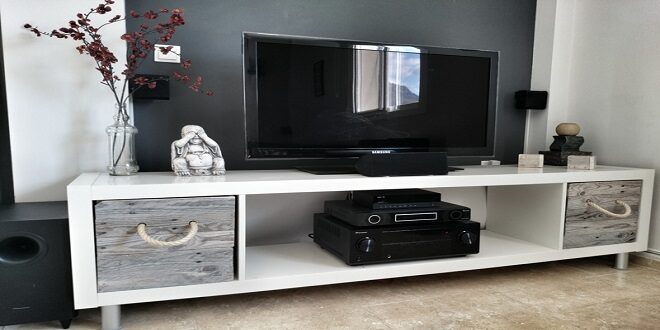To hang a TV on the wall, the TV stand is essential. Fixed, tiltable, rotating, of different types and sizes, the supports for flat screens allow you to watch television comfortably. Installed with plugs on the wall, the TV stands are easily installed. The new way of conceiving and living the house, made up of open spaces and continuity between the different environments, has revolutionized the furniture choices of the new generations.
Modern TVs, for example, with large and flat screens, are inserted into the living environment as if they were real furnishing accessories, respecting the style of the rest of the house. To place your TV, you must take into account the environment in which it will be placed and choose the system that best suits your needs
The 3 key points to choosing your TV stand in the best possible way
- Determine the weight of the TV and the material of the wall to define the fixing of the stand.
- Predict your TV orientation needs and choose a fixed, rotating, and/or tilting stand.
- Consider the size of the TV to fit the stand.
The different types of TV stands
The fixed TV stand
Simpler and cheap tv stand, this device is easy to install. In the back, it is equipped with a plate that allows you to fix it to the wall and hooks to fix on the TV. This TV stand is appreciated for its small size. It is important to choose the positioning as the screen is then oriented in one and only direction.
The TV support with rail
Similar to a large grid that receives the flat screen and attaches to the wall, this TV stand considerably reduces the space between the screen and the wall. Occupying a large surface area of the wall, this support often allows use on plasterboard. Depending on the configuration, the stand can be tiltable or not.
The rotating and tiltable TV stand
This TV support allows you to tilt and rotate the television according to the desired viewing angle, thanks to an articulated arm. Its wall fixing plate has a variable surface and the length of the arm is more or less high. This type of support responds to any type of configuration.
There are numerous solutions on the market, starting from design models to sophisticated ones, up to simple products suitable for all wallets, the most requested are:
REVOLVING BASES – The revolving bases can be made of wood, glass, and metal, they must be sturdy and must have special fixings to anchor the TV in a safe way.
WALL SUPPORTS – All TV wall stands, on the other hand, include dedicated brackets for installing the screen on the wall. This is the simplest solution which generally requires some masonry work to hide the different wires necessary for the operation of the audio and video devices.
TV CABINETS – Finally, TV cabinets are the most used solutions to optimize space and there are countless models.
CONSOLE – Small consoles, bookcase models, and furniture with retractable doors are also available on the market, but almost all the TV stands you will find will have spaces prepared for the various accessories, such as DVD player, decoder, etc., and the system of channels for hiding the cables.
The most difficult and important thing is to decide the ideal position to place the TV. Remember that it must be in front of the viewer at a safe distance , at the height of his gaze and away from direct sources of brightness that could interfere with the quality of the images and strain the eyes .
 Magazine Today
Magazine Today

